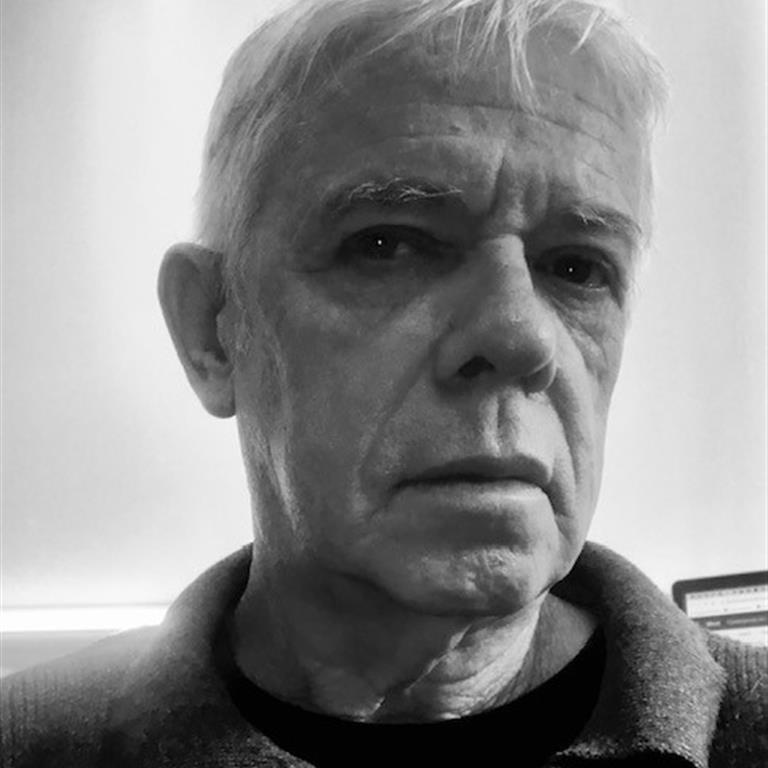Bachelor of Contemporary Art
Degree Level Undergraduate
Year 2024
You're considered an International student if you are:
Degree Level Undergraduate
Year 2024
Program Code
DBCX
Prerequisites
None
Assumed Knowledge
None
Fees
AUD$ 30,900 per annum (per 1.0 EFTSL) for students enrolled in 2024
Admissions
Student Profile
International Admission by Country
See full entry requirements
CRICOS Code
095004K
The admission criteria have been grouped to assist you to easily find the information most relevant to your circumstances. However, you may fit into more than one and the university will consider applicants against each of the relevant criteria.
Certain conditions apply. For more information refer to Appendix 4 of the University's Selection and Entry policy.
Applicants are required to meet one of the following criteria with a competitive result, and demonstrate that they fulfil any prerequisite requirements and essential requirements for admission:
Recent secondary education
Meet any prerequisite requirements with a minimum grade of C- or equivalent
AND
Applicants who have not achieved the Selection Rank required for automatic selection may be selected for any remaining places based on the grades of their year 12 subjects.
OR
Higher education study
OR
Vocational Education and Training (VET)
OR
Work and life experience
| Norway GPA | 2.8 |
| Pakistan HSSC | 75 |
| Sri Lanka A Levels (best 3) | 6 |
| Sweden GPA | 12.5 |
| UK Board GCE A Levels/HK Board | 6 |
| Vietnam | 7 |
| Australia | 65 |
| IB (best 6) | 26 |
| USA SAT (1600) | 1050 |
| India (best 4) State Board | 70 |
| India (best 4) Central Board | 60 |
| HKDSE | 15 |
| Nepal NEB | 2.41 |
| Bangladesh HSC | 3.5 |
| Canada High School (OSSD) | 60 |
| Eynesbury FSP | 310 |
| German Abitur | 3.8 |
| Kenya KCSE (average) | B |
| Malaysia STPM (best 3) | 6 |
| Malaysia UEC | 32 |
Contemporary since 1861. With its origins in the South Australian School of Art, the Bachelor of Contemporary Art is the product of a long history of innovative programs dedicated to the education and training of emerging artists, designers, and arts workers. UniSA is ranked #1 in South Australia for Learning Resources in Creative Arts1 and also holds the top rank in the state for Art and Design Facilities2.
As a student in the Bachelor of Contemporary Art, you will:
UniSA is an unstoppable university for unstoppable people. As one of the World’s Top Young Universities4, we’ll ensure you get the experience your future profession demands so it’ll feel like you’re studying one minute and in a career the next.
You also have the option of applying for the Bachelor of Contemporary Art/Master of Teaching (Secondary) packaged option for a pathway straight into secondary teaching.
1ComparED (QILT) Student Experience Survey 2021-22, Learning Resources Indicator (Undergraduate). SA public universities.
2ComparED (QILT) Student Experience Survey 2021-22, Creative Arts – Learning Resources Indicator (Undergraduate). SA public universities.
3Results in Studies in Creative Arts and Writing - 2018 Excellence in Research for Australia (ERA).
4UNSTOPPABLE® is a Kellogg Company trade mark used under licence. Ranked #52, 2023 THE Young University Rankings.
Contemporary artists use a wide variety of mediums and art forms to bring their ideas to life. As a student of the Bachelor of Contemporary Art, you can develop skills in your chosen studio areas while continuing to explore. Hands-on teaching and learning is a focus of the degree but this is accompanied by studies in art history and theory, and courses in how to grow your career and make connections in the local art scene and beyond.
Throughout your degree, you can select from a range of studio areas including:
A separate one-year Bachelor of Creative Arts (Honours) program is available to students who complete this degree with a credit or higher Grade Point Average (GPA). Other selection criteria may apply.
If you want qualifications as an art teacher, you can apply for the combined Bachelor of Contemporary Art/Master of Teaching (Secondary) degree - it's a pathway straight into a career as a secondary school art teacher. If this interests you, please read How Do I Become a Teacher before selecting your courses.
If you would like to apply directly into the Bachelor of Contemporary Art/Master of Teaching (Secondary) package option, please apply via SATAC using 424811.
Bring your creative ideas to life in dedicated studios and workshops, build a portfolio, and learn how to present your work in galleries and public spaces. Throughout your studies you will acquire the advanced technical, creative and critical thinking skills necessary for successful contemporary art practice.
In your first year you will be introduced to all studio areas and inducted into the safe use of workshops, materials, and equipment. Alongside this you will take courses in drawing, creative thinking, experimental media, and art history and theory. From your second year you can start to focus on your areas of particular interest or keep exploring via a wide range of electives. In your final year, you will work towards the completion of major artworks for presentation in the annual end-of-year graduate exhibition.
You will also have the opportunity to go on a study tour, take up a residency with an industry partner, or embark on a semester of study abroad, all as part of your Contemporary Art degree.
UniSA's Bachelor of Contemporary Art is South Australia’s most comprehensive undergraduate contemporary art qualification, with the most extensive range of studio areas, all located at the vibrant City West campus in the heart of Adelaide city’s art, culture and entertainment hub.
With access to dedicated studios, workshops, and gallery spaces, including the SASA Gallery, MOD. and Samstag Museum of Art, you will learn first-hand how to turn your creative ideas into reality.
Studio-based courses are supported by face-to-face tutorials and seminars, while a selection of online courses offer flexibility to allow you to fit study in with other work and life commitments.
Hear from UniSA graduate and artist Lucy Zola about her experience studying Contemporary Art at UniSA and how it has helped her reach her career goals.
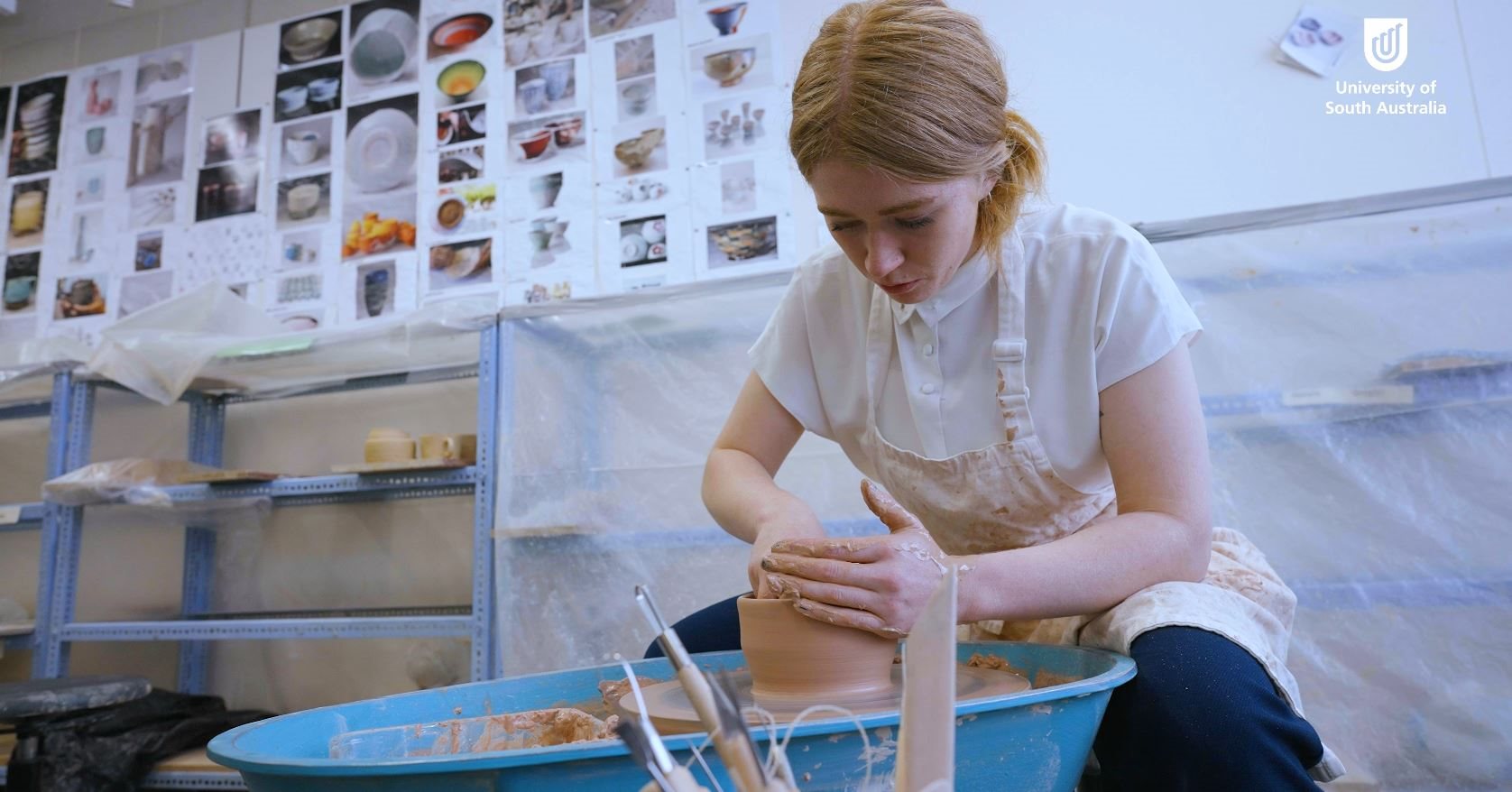
Yusuf won the annual Helpmann Academy British School at Rome Residency, valued at $25,000.
The British School at Rome Residency (BSR) was an opportunity to reflect on what I had been doing and how I might take that forward on returning to Australia. My interest lay initially in Islamic geometric tile patterns such as the Cosmatesque tiles in Rome and other parts of Southern Italy. The live-in studio space at the BSR ensured that my creative practice was at the forefront of my thoughts.
After my Honours, I was awarded a scholarship for postgraduate research at UniSA and have started my PhD. The time to step away and reflect on my research interests, motivation and the intended outcomes has been invaluable.
Image credits: Mashrabiya by Yusuf Ali Hayat
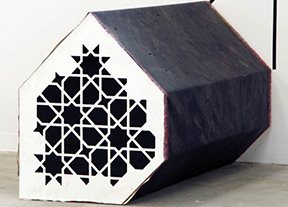
Yusuf Ali Hayat
Bachelor of Visual Arts *now Bachelor of Contemporary Art
Bachelor of Contemporary Art graduates are not only creative problem solvers, but they also ask new questions. They are motivated, independent, resourceful, and able to apply their learning in a wide range of professional contexts, including museums and galleries, councils, theatres, festivals and community organisations.
The job prospects for contemporary artists in Australia are strong1 and the practical, creative, and analytical skills developed in the Bachelor of Contemporary Art are immediately transferable to other areas of the arts and cultural industries, and beyond. Careers for graduates of the Bachelor of Contemporary Art include:
*To qualify as a secondary school art teacher, you can apply for the combined Bachelor of Contemporary Art/Master of Teaching (Secondary) degree - it's a pathway straight into a secondary teaching career. If this interests you, please read How Do I Become a Teacher before selecting your courses.
1Australian Government, National Skills Commission, Job Outlook 2020
How to apply for international students will give you helpful information about the application process at the University of South Australia. When you are ready, apply through our International Application System. If you would like to talk to someone near you about studying at the University of South Australia, we have agents all over the world who can assist you. Find an Education Agent in your country.
Australian
There are other pathways you can follow to study this degree, including:
International
There are other pathways you can follow to study this degree, including:
see the full list of entry pathways that may apply
Every year, over 2,500 UniSA students are supported in their studies through scholarships and grants worth millions of dollars. Check out the scholarships below. One of them may be perfect for you. Visit our scholarships page for more.
Recipients can get a 50% reduction on tuition fees for up to four years of full-time study for selected degrees.
Recipients can get a 15% reduction on tuition fees for the duration of their chosen degree.
As a UniSA student, you will have unique access to work placement opportunities, overseas study tours and exchanges, networking events, internships, guest speakers and more.
Our campuses are equipped with state-of-the-art facilities including modern lecture theatres, libraries, workshops and laboratories, as well as spaces that simulate real work environments. These are all supported by the latest technologies and a 24/7 online learning platform. We have health services on campus, gymnasiums, technology zones and great student lounges. You will also gain access to a range of community clinics, which provide professional and cost effective services in areas of health, business, law and psychology. There are campus sport activities to keep you active, and if you are keen to explore the social side of university life, there are movies, cooking demonstrations, parties and lots more.
Adelaide also has a variety of accommodation options to suit different requirements and budgets. Options include dedicated student accommodation and private rentals. See our long-term accommodation pages, or explore our student accommodation by Scape on Bank Street in Adelaide’s lively cultural precinct, an ideal location for students. It is within easy reach of UniSA’s city and metropolitan campuses, Rundle Mall shopping, the Central Market, Chinatown, and the West End’s vibrant nightlife. It is also across the road from the Adelaide train station, and on bus and tram routes.
UniSA’s City West campus is located at the heart of Adelaide’s vibrant art, culture and entertainment precinct. As a Contemporary Art student, you will have extended access to:
Stephen Atkinson is Program Director of the Bachelor of Contemporary Art at UniSA Creative, lecturer in art theory and history, and studio instructor in printmaking. He also facilitates projects on sound art and the creative possibilities of everyday life and materials. As an educator, Stephen is committed to the wider personal and social benefits of art education, and the creative and critical thinking outcomes of learning through making.
"While the Bachelor of Contemporary Art is focused on fostering curiosity and teaching how to make and conceptualise artworks, these processes also open up other ways of thinking that are transferable across all areas of life and work. Most tertiary programs assist students to develop problem solving skills, but art education emphasises the importance of asking new questions to conceive the world differently and reimagine our place in it."
There are a number of ways to apply to study UniSA's undergraduate and postgraduate coursework degrees.
You can access our online International Application System through our How to Apply page. The International Application System is an easy and secure online application and acceptance process. You will have visibility of your application through the secure online portal with the ability to download offer documents, submit your acceptance and make a payment.
Alternatively you can submit an application through one of the University's registered Education Agents.
If you are completing an Australian year 12 qualification in Australia or overseas, or the International Baccalaureate (IB) Diploma Programme in Australia, you must apply through SATAC http://www.satac.edu.au/.
If you are applying for the UniSA Study Abroad or Study Abroad Plus program, you can submit your application online here.
Postgraduate study by research
For information on applying to do postgraduate study by research, including Masters by Research, PhDs or Doctorates, please visit http://unisa.edu.au/resdegrees.
There is no closing date for submitting your application however the admissions process takes between one and three weeks from the date that we receive your application and all required supporting documentation.
If you are completing an Australian year 12 qualification in Australia or overseas, or the International Baccalaureate (IB) Diploma Programme in Australia, you must apply through SATAC. Key dates for applications can be found here.
You may be eligible to receive credit or advanced standing for your chosen UniSA degree based on your previous studies, if they are in a related area at an equivalent or higher level. Receiving credit will reduce the number of courses you undertake within the degree, and may also reduce the overall duration of your degree.
The amount of credit you may be eligible to receive is assessed on a case-by-case basis by the Admissions team.
The best way to determine your eligibility to receive credit or advanced standing is to apply using our International Application System which can be found on our How to Apply page. You will need to supply detailed syllabus documents with your application.
UniSA welcomes the opportunity to speak with you regarding your study options. Our staff are able to talk to you about degree information, career outcomes and pathways, entry requirements, applications, and student life, so that you are able to make the best study decision for your future.
Click here to book a 1:1 appointment with one of our enquiries team.
We also have many events throughout the year in Australia and overseas where you can speak with UniSA representatives about your area of interest. View our calendar of events in your home country by selecting the 'International' filter.
Curious about studying Contemporary Art? Hear from Ella-Maude who studied the Bachelor of Contemporary Art at UniSA.






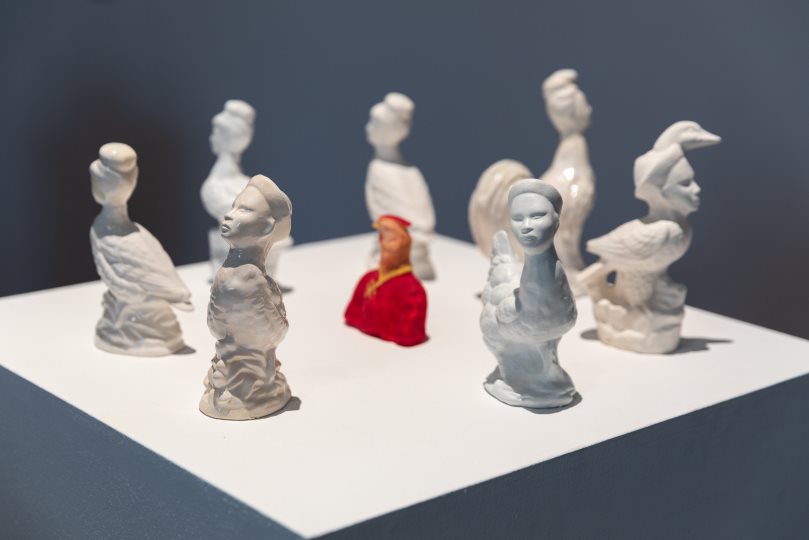
Alice Hu, Bachelor of Contemporary Art
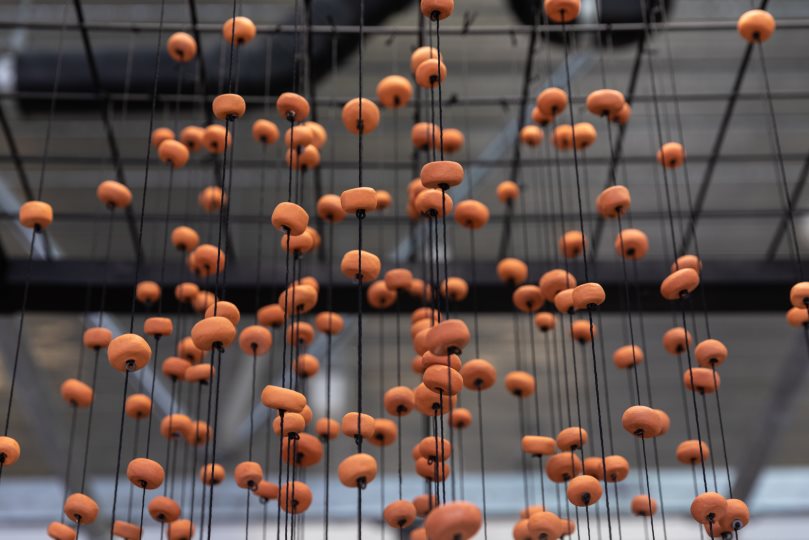
Georgia Bailey, Bachelor of Contemporary Art
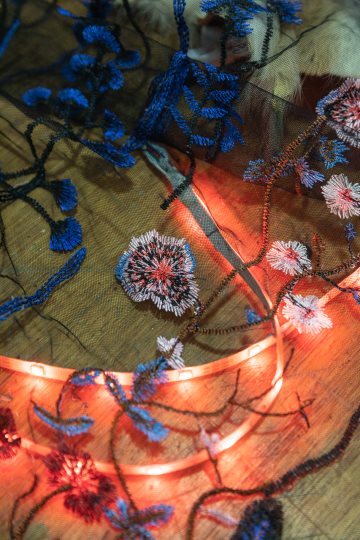
Anna Crafter, Bachelor of Contemporary Art




